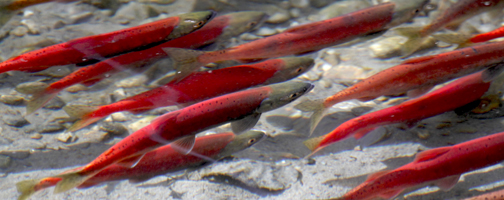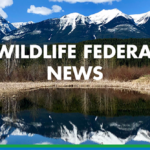LETTER: BC Wildlife Federation slams BC Hydro's management of Arrow Lakes fish populations
The Kootenay region has endured a disproportionate amount of ecological damage due to numerous upper Columbia Basin hydro developments that have generated considerable economic benefits to the province, but also caused significant social and environmental damage to the region. The most recent dam at Revelstoke caused huge disruption and losses to fish and wildlife populations that were identified at public hearings in Revelstoke in 1978. During the 1980s, BC Hydro made a number of commitments to restore fish and wildlife lost due to their Columbia River hydro developments including the Revelstoke Dam. The government and BC Hydro eventually formed a program called the Fish and Wildlife Program (FWCP) in the mid-1990s to restore fish and wildlife losses, especially those related to the Revelstoke Dam. The BCWF has long argued that the FWCP should not be administered by BC Hydro, yet to this day it remains under their control administered out of their Castlegar office. The so-called partner, the Ministry of Forests, Lands and Regional Operations (FLNRO), neither has the capacity to function as a true partner nor the arm’s length relationship necessary to ensure BC Hydro delivers on its primary responsibility of restoring fish and wildlife and their habitats outlined in their water licence.
At the Revelstoke Public Hearings, Arrow Lakes Reservoir fish losses were identified and agreed upon by BC Hydro and the government. The Revelstoke Dam blocked an estimated 500,000 Kokanee, 1000 rainbow trout and 4,000 bull trout. Prior to the formation of the FWCP, BC Hydro paid for construction of the Hill Creek spawning channel aimed at replacing most of the Revelstoke Dam Kokanee losses and some of the rainbow trout. In the past two decades, little has been done to replace bull trout and their numbers today are less than before Revelstoke Dam was built. A small rainbow trout hatchery at the Hill Creek spawning channel was closed after determining it wasn’t producing the numbers expected. Ironically, a small number of large trout continue to return to the spawning channel despite the FWCP claim the hatchery was unsuccessful.
The BCWF acknowledges there has been, or at least there was, success associated with restoration of the Arrow Lakes Reservoir fish populations. The nutrient restoration program initiated in 1997 vastly increased reservoir productivity, resulting in record returns of Kokanee to the Hill Creek spawning channel in the early 2000s that came close to achieving the 500,000 target. Unfortunately, this success was not sustained due to the change in flows out of the Revelstoke Dam that has reduced the effectiveness of the nutrient program. As a management agency, FLNRO, in the public interest, should have pursued compensation or offsets for the operational change.
The FWCP’s own technical reports document the slow decline of the Arrow Lakes Reservoir Kokanee population since the early 2000s. By 2013, the population was nearly as low as the numbers after the Revelstoke Dam and before nutrient addition began. Today, the total Kokanee spawner population is only about 200,000, far less than the restoration target of 500,000 plus the 200,000 pre-dam level.
Why the emphasis on Kokanee numbers? They are the primary food source for rainbow and bull trout and, without large numbers of Kokanee, these trout will not thrive, and restoration of their numbers as agreed upon simply cannot be met. The BCWF, in fact, argues trout numbers today are less than before the Revelstoke Dam was built.
The FWCP response to what has recently happened on the Arrow is irresponsible. Rather than redouble efforts to restore Kokanee via the Hill Creek spawning channel and nutrient addition, the FWCP has decreased spawning channel production by excluding close to 40,000 spawners from the spawning channel in 2013, with intentions of doing the same in 2014. Why? Evidently, the interest now lies in trying to create larger Kokanee for anglers since reduction of Kokanee numbers in the reservoir will result in fewer but larger size! This is a case of managing fisheries down the food chain rather than maintain trophy size rainbow and bull trout fisheries. Is this in the best public interest?
The numbers available for such an ill-conceived experiment will be drawn from less than 200,000 spawners, thus the numbers of larger-size Kokanee will be small, spread out over a very large reservoir. To further rationalize this folly, FLNRO argues that “wild” Kokanee need protection from “hatchery” Kokanee produced at the spawning channel. This is a ludicrous argument, given the total mixing of stocks due to reservoir formation and several millions of hatchery Kokanee introduced to the system over the decades. Kokanee are not endangered in BC or in the reservoir: the FWCP has lost sight of its mandate to replace Kokanee and the trophy fisheries they support in the Arrow Lakes Reservoir. The health and welfare of the trout stocks are now at risk, since their food source has been greatly diminished. The BCWF maintains that trout fishing on the reservoir has, and always will be, the primary interest of year round anglers. What is the purpose of the FWCP if it is not intending to replace Kokanee and trout? The BCWF has recently spoken to the FWCP Board about this contradictory situation, to no avail.
The current measures to produce fewer but larger Arrow Kokanee while putting the trout at risk is in sharp contrast to what is successfully done on nearby Kootenay Lake. On this lake, a spawning channel at Meadow Creek is used to produce large numbers of smaller Kokanee as prey, primarily for the world famous Gerrard rainbow trout as well as for bull trout. A productive fishery is the result. Why is the Arrow being managed differently?
Clearly, there is no accountability for what is taking place on the Arrow Lakes Reservoir. BC Hydro points out that FLNRO is responsible for managing fish and wildlife. FLNRO is incapable of having an arm’s length relationship with BC Hydro and holding the corporation’s feet to the fire by insisting on BC Hydro meeting its compensation obligations. The residents of the Arrow Lakes Reservoir should be incensed as to what is taking place. The BCWF urges people to write to their MLAs and Ministers demanding a change to the administration of the FWCP by removing it from the hands of BC Hydro and demanding accountability within FLNRO. The BCWF has for over a decade argued the fox should not be in charge of the chicken coop, as is the case now. This current scenario has led to BC Hydro not meeting its compensation obligations and not keeping its promise to the residents of the West Kootenay. Today it is the same Corporation that is representing the public’s interest in the Columbia Treaty renegotiations.
Finally, the BCWF supports last week’s decision by the government to proceed with a public inquiry into Arrow Lakes Reservoir fisheries management and the role of the FWCP.
Gord Grunerud West Kootenay Zone President
Harvey Andrusak Director BC Wildlife Federation



























Comments